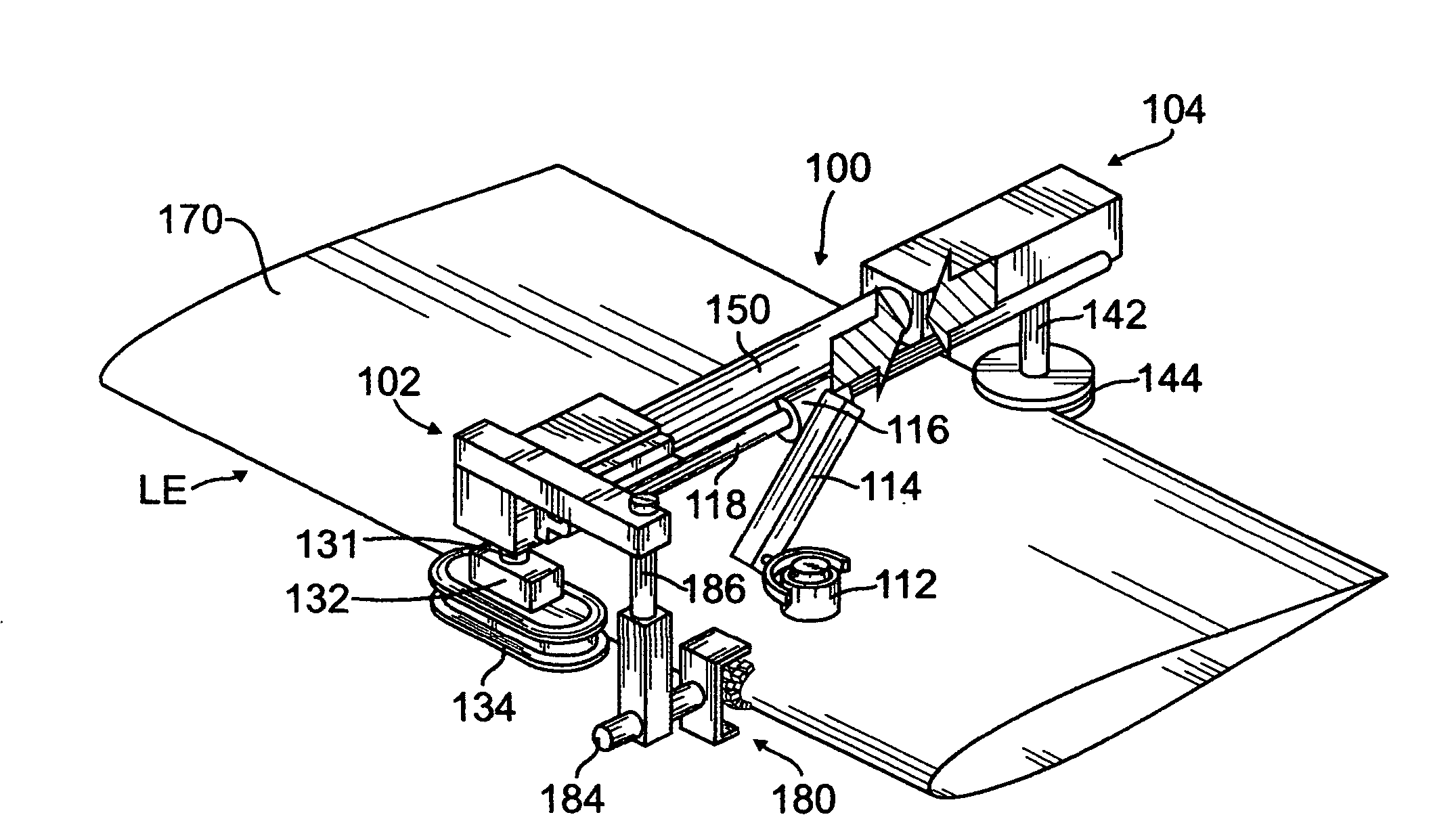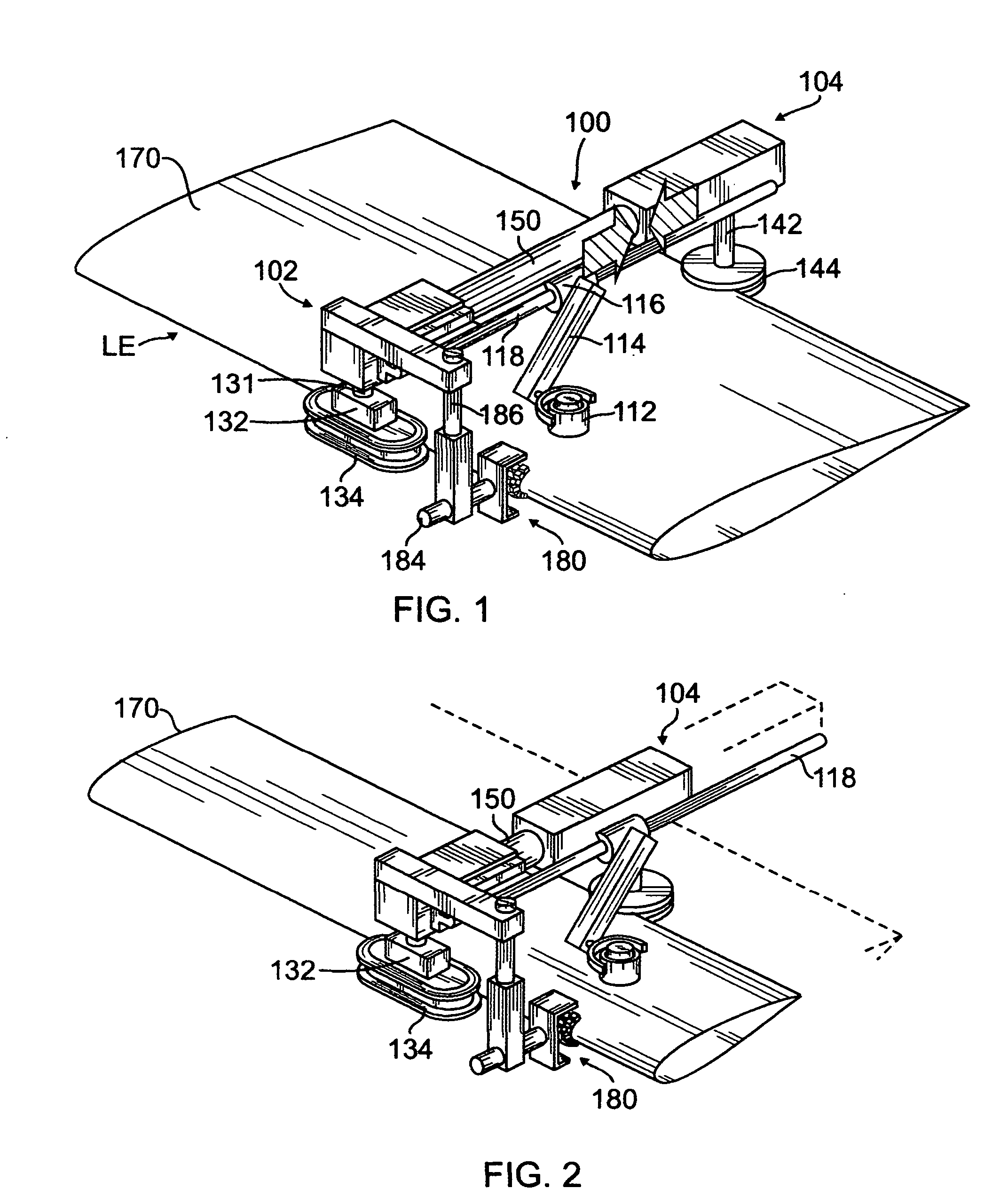Crawling automated scanner for non-destructive inspection of aeropace structural elements
an automated scanner and structural element technology, applied in the direction of mechanical measuring arrangements, mechanical roughness/irregularity measurements, instruments, etc., can solve the problems of inability to achieve or too expensive and time-consuming, manual scanning of structures is time-consuming, labor-intensive, and prone to human error and/or other health problems for technicians
- Summary
- Abstract
- Description
- Claims
- Application Information
AI Technical Summary
Problems solved by technology
Method used
Image
Examples
Embodiment Construction
[0022]Embodiments of the present disclosure now will be described more fully hereinafter with reference to the accompanying drawings. However, many different embodiments are contemplated and the present disclosure should not be construed as limited to the embodiments set forth herein; rather, these embodiments are provided so that this disclosure will be thorough and complete and better convey the scope of the disclosure to those skilled in the art.
[0023]In its broadest sense, this disclosure presents an autonomous, self-propelled, expandable, and adjustable apparatus for inspecting in-service aerospace structures such as rotorcraft blades, aircraft propellers, smaller winglets, narrow tail sections, and windmill blades for structural damage by “crawling along the length of the structure using the structure itself as the track, and employing scanning sensor mechanisms such as ultrasonic pulse echo, eddy current arrays, resonance arrays, and bondtester or laser probes, to access the ...
PUM
 Login to View More
Login to View More Abstract
Description
Claims
Application Information
 Login to View More
Login to View More - R&D
- Intellectual Property
- Life Sciences
- Materials
- Tech Scout
- Unparalleled Data Quality
- Higher Quality Content
- 60% Fewer Hallucinations
Browse by: Latest US Patents, China's latest patents, Technical Efficacy Thesaurus, Application Domain, Technology Topic, Popular Technical Reports.
© 2025 PatSnap. All rights reserved.Legal|Privacy policy|Modern Slavery Act Transparency Statement|Sitemap|About US| Contact US: help@patsnap.com



